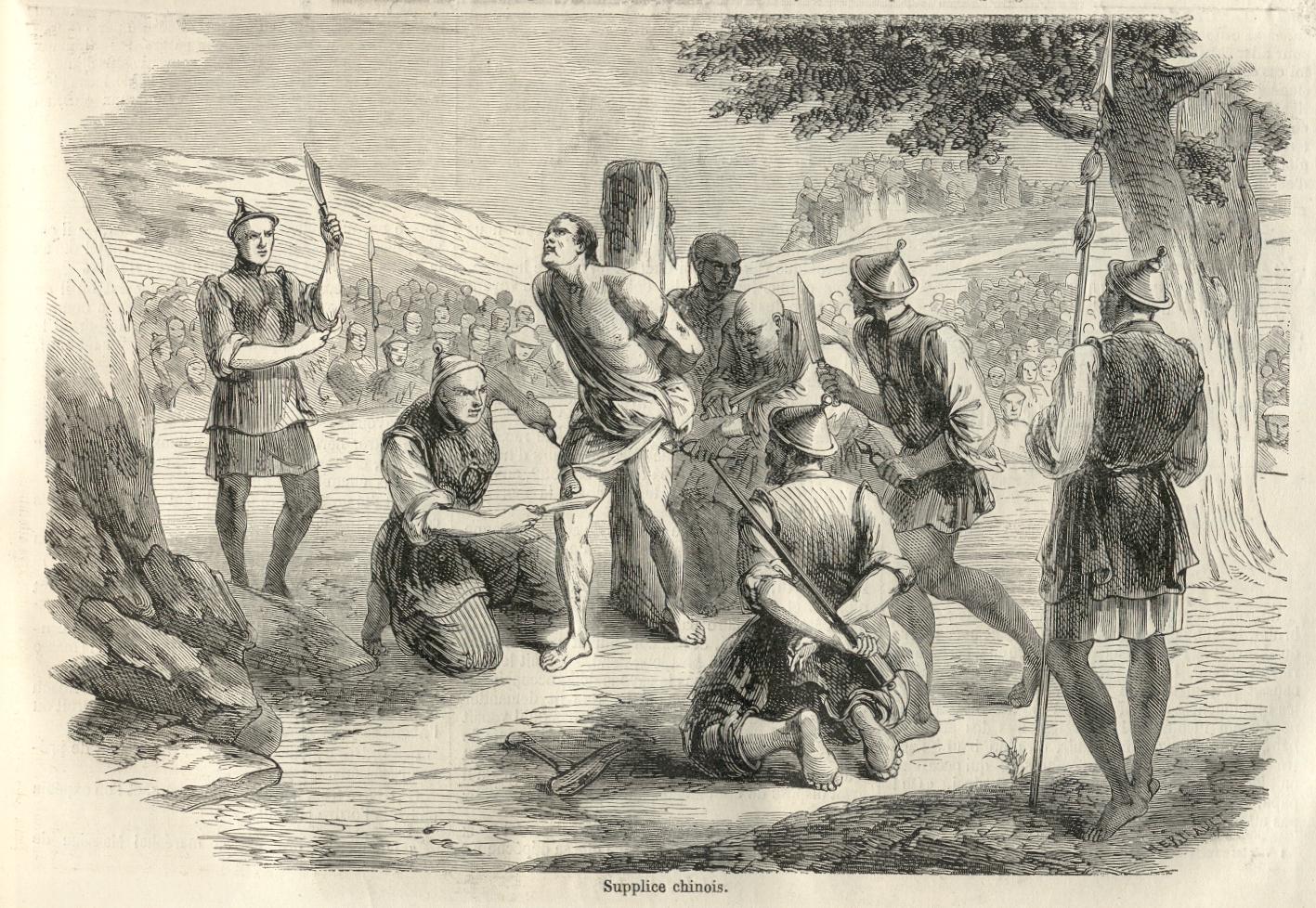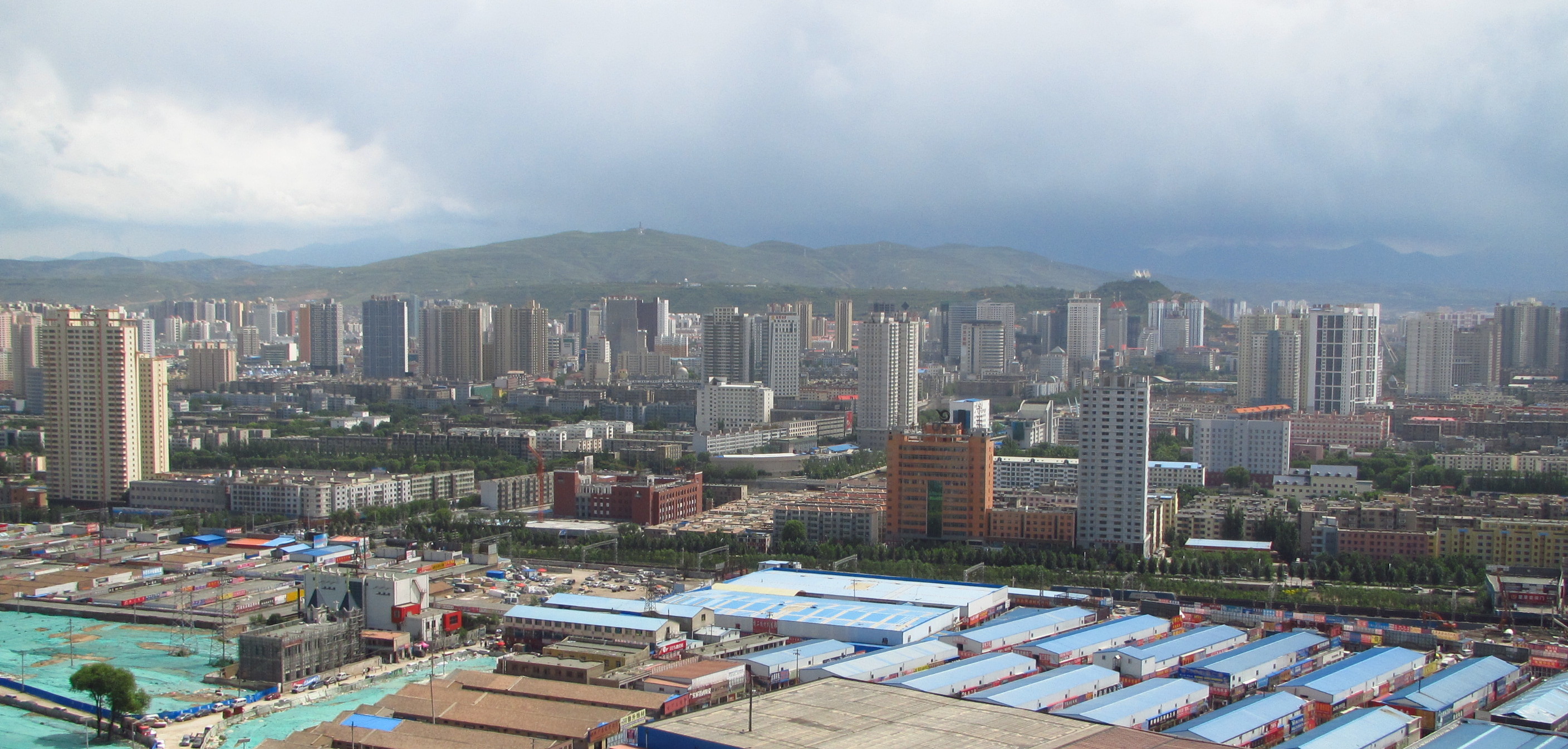|
Ma Hualong
Ma Hualong () (died March 2, 1871), was the fifth leader (, ''jiaozhu'') of the Jahriyya, a Sufi order ('' menhuan'') in northwestern China.Dillon (1999), pp. 124-126 From the beginning of the anti-Qing Muslim Rebellion in 1862, and until his surrender and death in 1871, he was one of the main leaders of the rebellion. Biography Ma Hualong became the leader of the Jahriyya ca. 1849, succeeding the '' menhuans fourth ''shaykh'', Ma Yide (late 1770s - 1849). Although the Jahriyya had been originally created by Ma Mingxin in the central Gansu, by the time of Ma Hualong's succession to the leadership position the order was centered in the northern Ningxia (which in the 19th century was also part of Gansu Province), its headquarters being located in Jinjipu (), a few kilometers south from today's Wuzhong City. Lipman (1998), p. 125 The town of Jinjipu became an important religious and commercial center, and the ''menhuans leaders grew wealthy thanks to the order's profitable ... [...More Info...] [...Related Items...] OR: [Wikipedia] [Google] [Baidu] |
Ma (surname)
Ma () is a Chinese family name. The surname literally means " horse". As of 2006, it ranks as the 14th most common Chinese surname in Mainland China and the most common surname within the Chinese Muslim community, specifically the Hui people, Dongxiang people and Salar people. In 2019 it was the 13th most common surname in Mainland China. A 2013 study found it to be the 13th most common, shared by 17,200,000 people or 1.290% of the population, with the province with the most being Henan. It is the 52nd name on the '' Hundred Family Surnames'' poem.K. S. Tom. 989(1989). Echoes from Old China: Life, Legends and Lore of the Middle Kingdom. University of Hawaii Press. . The offspring of Zhao She adopted "Ma" (馬), the first word of the district Ma Fu, as their surname. Other romanizations include Mah, Beh and Mar. Hui Muslims, Salars, Bonan and Dongxiang people commonly adopted Ma as the translation for their surname Muhammad. for e.g. Ma Jian, Ma Benzhai, Ma clique. Dur ... [...More Info...] [...Related Items...] OR: [Wikipedia] [Google] [Baidu] |
Beijing
} Beijing ( ; ; ), alternatively romanized as Peking ( ), is the capital of the People's Republic of China. It is the center of power and development of the country. Beijing is the world's most populous national capital city, with over 21 million residents. It has an administrative area of , the third in the country after Guangzhou and Shanghai. It is located in Northern China, and is governed as a municipality under the direct administration of the State Council with 16 urban, suburban, and rural districts.Figures based on 2006 statistics published in 2007 National Statistical Yearbook of China and available online at archive. Retrieved 21 April 2009. Beijing is mostly surrounded by Hebei Province with the exception of neighboring Tianjin to the southeast; together, the three divisions form the Jingjinji megalopolis and the national capital region of China. Beijing is a global city and one of the world's leading centres for culture, diplomacy, politics, financ ... [...More Info...] [...Related Items...] OR: [Wikipedia] [Google] [Baidu] |
Slow Slicing
''Lingchi'' (; ), translated variously as the slow process, the lingering death, or slow slicing, and also known as death by a thousand cuts, was a form of torture and execution used in China from roughly 900 CE up until the practice ended around the early 1900s. It was also used in Vietnam and Korea. In this form of execution, a knife was used to methodically remove portions of the body over an extended period of time, eventually resulting in death. ''Lingchi'' was reserved for crimes viewed as especially heinous, such as treason. Some Westerners were executed in this manner. Even after the practice was outlawed, the concept itself has still appeared across many types of media. Etymology The term ''lingchi'' first appeared in a line in Chapter 28 of the third-century BCE philosophical text '' Xunzi''. The line originally described the difficulty in travelling in a horse-drawn carriage on mountainous terrain. Later on, it was used to describe the prolonging of a person's ago ... [...More Info...] [...Related Items...] OR: [Wikipedia] [Google] [Baidu] |
Zuo Zongtang
Zuo Zongtang, Marquis Kejing ( also spelled Tso Tsung-t'ang; ; November 10, 1812 – September 5, 1885), sometimes referred to as General Tso, was a Chinese statesman and military leader of the late Qing dynasty. Born in Xiangyin County, Hunan Province, Zuo sat for the imperial examination in his youth but obtained only a ''juren'' degree. He then spent his time studying agriculture, geography and military strategy. In 1851, he started his career in the Qing military by participating in the campaign against the Taiping Rebellion. In 1862, he was recommended by Zeng Guofan to serve as the provincial governor of Zhejiang Province. During his term, he coordinated Qing forces to attack the Taiping rebels with support from British and French forces. For this success, he was promoted to Viceroy of Min-Zhe. After capturing Hangzhou from the Taiping rebels in 1864, he was enfeoffed as a first class count. In 1866, as part of the Qing government's Self-Strengthening Movement, Zu ... [...More Info...] [...Related Items...] OR: [Wikipedia] [Google] [Baidu] |
Shaanxi
Shaanxi (alternatively Shensi, see § Name) is a landlocked province of China. Officially part of Northwest China, it borders the province-level divisions of Shanxi (NE, E), Henan (E), Hubei (SE), Chongqing (S), Sichuan (SW), Gansu (W), Ningxia (NW) and Inner Mongolia (N). Shaanxi covers an area of over with about 37 million people, the 16th highest in China. Xi'an – which includes the sites of the former Chinese capitals Fenghao and Chang'an – is the provincial capital as well as the largest city in Northwest China and also one of the oldest cities in China and the oldest of the Four Great Ancient Capitals, being the capital for the Western Zhou, Western Han, Jin, Sui and Tang dynasties. Xianyang, which served as the Qin dynasty capital, is just north across Wei River. The other prefecture-level cities into which the province is divided are Ankang, Baoji, Hanzhong, Shangluo, Tongchuan, Weinan, Yan'an and Yulin. The province is geographically div ... [...More Info...] [...Related Items...] OR: [Wikipedia] [Google] [Baidu] |
Jiuquan
Jiuquan, formerly known as Suzhou, is a prefecture-level city in the northwesternmost part of Gansu Province in the People's Republic of China. It is more than wide from east to west, occupying , although its built-up area is mostly located in its Suzhou District. At the end of 2021, the province's resident population was 24.9002 million, a decrease of 110,000 compared with the end of the previous year, of which: male population was 12.6601 million, female population was 12.2401 million, and the population sex ratio was 103.43 (females were 100). Name The city was formerly known as Fulu, which became known as Suzhou (Suchow, Su-chow, &c.) after it became the seat of Su Prefecture under the Sui.485 As the seat of Jiuqu ... [...More Info...] [...Related Items...] OR: [Wikipedia] [Google] [Baidu] |
Suzhou District
Suzhou District is a district of the city of Jiuquan, Gansu Province in the People's Republic of China. It was an important city in its own right. Today, as the seat of Jiuquan's administration, it is usually marked Jiuquan on maps. Ganzhou and Suzhou (). Name Suzhou is named for the former Su Prefecture of imperial China. History Su Prefecture was established under the Sui and renamed Jiuquan Commandery under the Tang. Its seat was established just within the extreme northwest angle of the Great Wall near the Jade Gate. It sometimes served as the capital of the province of Gansu. Along with its role protecting trade along the Silk Road, Suzhou was the great center of the rhubarb trade. The old town was completely destroyed in the First Dungan Revolt but was recovered by the Qing in 1873 and was swiftly rebuilt. Administrative divisions Suzhou District is divided to 7 Subdistricts, 14 towns, 1 townships and 3 other. ;Subdistricts ;Towns ;Townships * Huangnipu Tow ... [...More Info...] [...Related Items...] OR: [Wikipedia] [Google] [Baidu] |
Xining
Xining (; ), alternatively known as Sining, is the capital of Qinghai province in western China and the largest city on the Tibetan Plateau. The city was a commercial hub along the Northern Silk Road's Hexi Corridor for over 2000 years, and was a stronghold of the Han, Sui, Tang, and Song dynasties' resistance against nomadic attacks from the west. Although long a part of Gansu province, Xining was added to Qinghai in 1928. Xining holds sites of religious significance to Muslims and Buddhists, including the Dongguan Mosque and Ta'er Monastery. The city lies in the Huangshui River valley, and owing to its high altitude, has a cool climate on the borderline between cool semi-arid and dry winter humid continental. It is connected by rail to Lhasa, Tibet and connected by high-speed rail to Lanzhou, Gansu and Ürümqi, Xinjiang. The city is home to Qinghai University, a comprehensive university and the only Project 211 university in Xining. History Xining has a hist ... [...More Info...] [...Related Items...] OR: [Wikipedia] [Google] [Baidu] |
Linxia City
Linxia City (, Xiao'erjing: لٍِثِيَا شِ), once known as Hezhou (, Xiao'erjing: حَجِوْ), is a county-level city in the province of Gansu of the People's Republic of China and the capital of the multi-ethnic Linxia Hui Autonomous Prefecture. It is located in the valley of the Daxia River (a right tributary of the Yellow River), (by road) southwest of the provincial capital Lanzhou.Linxia City brief info, on the web site of the prefectural government (The page itself is dated April 2008, but does not state the dates for which population estimates have been made) The population of the entire county-level city of Linxia (which includes both the central city and some rural area) is estimated at 250,000; of which, 58.4% is classified as urban population. Accordin ... [...More Info...] [...Related Items...] OR: [Wikipedia] [Google] [Baidu] |





